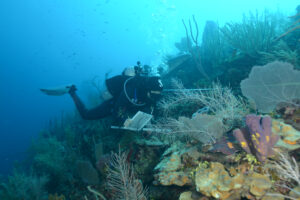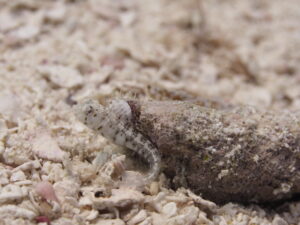by Kristen Goodhue
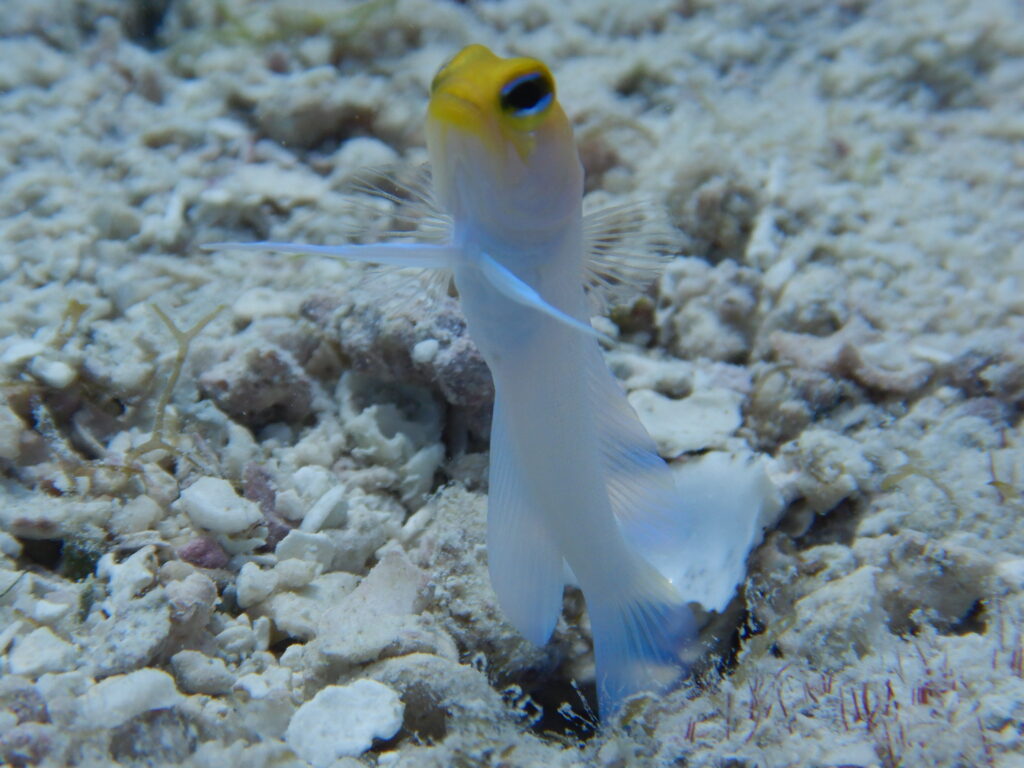
When choosing which parts of the ocean to protect, many conservationists immediately jump to coral reefs or, occasionally, seagrasses and mangroves. But there’s another habitat that’s routinely forgotten. Sand flats harbor disproportionately high levels of species not found in other ecosystems, according to a new study led by the Smithsonian Environmental Research Center (SERC) and Marine Global Earth Observatory (MarineGEO) program.
Sand flats don’t get a lot of credit. They lack the obvious habitat that reefs and seagrasses offer. For a long time, most biologists assumed that because they attract fewer fish, there wasn’t much happening in them. But Leah Harper, a SERC biologist, central technician for MarineGEO and lead author of the new study, has seen plenty of evidence to the contrary while diving in the sand flats of Belize.
“You see a lot of weird stuff there….You’d have to completely learn a few new species that you’ve never seen in hundreds of dives on coral reefs,” Harper said.
At the same time, the sand flat ecosystem is easy to forget—not because it’s hidden, but because it’s so widespread. Sandflats remain largely inconspicuous in contrast to colorful coral reefs, lush seagrass meadows, and mighty mangrove forests.
“It’s everywhere,” she said. “It’s abundant. It’s not really under any sort of conservation threat the way we normally think of those threats. And so that seems to be why it’s overlooked.”
Marine Life’s Missing Pieces
Harper and her colleagues made the discovery in Carrie Bow Cay, an island off the coast of Belize on the Meso-American Barrier Reef. The Smithsonian has run a field station on Carrie Bow since the 1970s. The field station, like the island, is tiny: Housing is limited to just six scientists, plus a field station manager and kitchen staff. But it’s a vital locale for research on tropical marine ecosystems. Carrie Bow was one of the first sites to join the Smithsonian’s MarineGEO network, an international network that tracks coastal biodiversity around the globe.
In the new study, Harper and other MarineGEO divers surveyed fish biodiversity in five habitat types: sand flats, mangrove trees, seagrasses and two types of coral reefs—deeper fore reefs, and shallow patch reefs closer to the islands. Each habitat had three sites represented in the study across several nearby islands. The divers returned to each site for five years.
Despite having fewer fish species overall, the team discovered sand flats hosted the highest percentage of unique species—making them essential components of underwater biodiversity. Roughly 28% of the fish species in sand flats appeared nowhere else. That’s compared to roughly 26% unique species in mangroves, 12-15% in the reefs and a mere 6% in seagrasses.
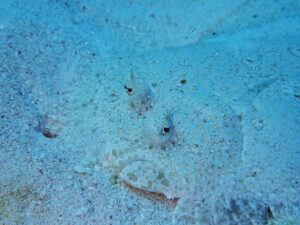
“You’re getting actually whole different species in the sand than you get on a reef or a mangrove or seagrass,” said coauthor Jonathan Lefcheck, the coordinating scientist for MarineGEO. “So, if you lost the sand, you’re losing irreplaceable diversity across the whole seascape.”
Examples include hovering dartfish, animals known to burrow in pairs beneath the sand. The dartfish earned their name from their habit of darting into their burrows when threatened. Harper’s team only found the dartfish in the sand flats.
Other animals, like the yellow-headed jawfish, occupy both reefs and sand but need sand habitats to burrow. Flounders also can migrate between both habitats, but only appeared in sand flats in the Belize study. The team even found one fish that they’d never seen in their surveys before: the sailfin blenny. Like jawfish, sailfin blennies can survive on reefs but prefer areas with plenty of sand or rubble. Not surprisingly, the two sailfin blennies Harper found appeared in a sand flat adjacent to a coral reef.
Support Systems Built on Sand
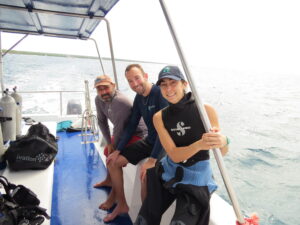
In addition to habitat, Harper speculates that sand flats could also be a crucial food source for many of these smaller fish.
“A lot of them are probably eating benthic infauna, little invertebrates that live in the sand, that might not be available in such abundance on a coral reef where things get eaten really quick,” she said. This in turn could benefit larger, reef-dwelling fish—like groupers and snappers—that prey on the sand-dwelling fish. In effect, Harper said, the sand flats could be a “protein subsidy” for more popular and commercially valuable reef fish.
Does this mean sand flats should get the same level of protection as corals, seagrasses or mangroves? Probably not, according to the authors. Most species that dwell in sand flats aren’t under any immediate threat or actively exploited. And there’s a reason marine constructions projects like offshore wind farms usually get built in sand, Harper pointed out—it’s by far less damaging than building on rapidly disappearing seagrasses or corals.
But sand flats have earned a place at the table, the authors argue. When planning out marine protected areas, conservationists won’t get a complete picture unless they account for the sand flats around coral reefs and other more charismatic habitats.
“If your goal in creating a protected area is to conserve biological diversity, then you should be understanding the full gamut of biological diversity you’re conserving,” Lefcheck said. “If there’s a really unique contribution from sand, then more people should be out and surveying sand habitats. Because we don’t know how effective these protection measures are in conserving sand biodiversity relative to, say, corals or seagrass.”
The full research study, “Blinded by the bright: How species-poor habitats contribute to regional biodiversity across a tropical seascape” appeared in the November print issue of the journal “Diversity and Distributions.” It is available online at https://onlinelibrary.wiley.com/doi/10.1111/ddi.13632.
Dive Deeper:
Stony Corals Staging A Comeback in Belize
Digging for Blue Carbon in the Mangroves of Belize
Biodiversity Makes Reefs Tick—But It Needs Big Players

